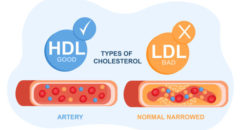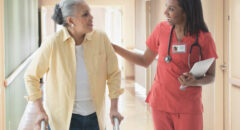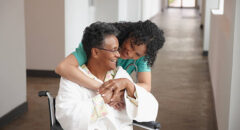express yourself. It’s hard to speak if you have severe facial weakness on one side. It may seem you’re drunk or slurring, but you’re not. Thus, a stroke requires immediate assessment.
RELATED: At a Loss For Words: 4 Tips For Overcoming Aphasia
Smell
This is intriguing since, unlike other senses, the scent is seldom compromised with a stroke. This is because the sense of smell involves both sides of the brain. That it involves both hemispheres of your brain. So even if you lose part of your brain on one side, you still have the other. Hence, the sense of smell is often unaffected.
Taste
Stroke may sometimes alter the tongue’s ability to taste and smell. The involvement of nerves responsible for tongue movement and taste perception is essential. Although this symptom is very uncommon, we do see it sometimes. Your risk of stroke and the ability to reduce that risk are strongly influenced by the foods you choose to eat. Fast eating, meals heavy in salt or sodium, and foods with very high cholesterol levels all increase the risk of stroke.
Plaque or several blockages surrounding the artery will form if a person has very high blood cholesterol levels. Once again, if you see your arteries as pipes or plumbing, you’d prefer that they be clear and unobstructed. Cholesterol will wrap itself tightly around the blood vessels, cutting off blood flow to the brain and increasing the risk of a stroke if it is present.
Touch
A damaged right side of the brain may cause numbness in the face, arm, or leg. Experiences vary. Numbness, tingling, or dysesthesia may occur in different places of the body. Thus, people may mistake a little touch for a burn or heavy pressure. Thus, the brain is misinterpreting pain. Some strokes affect coordination. After a stroke, patients may develop one-sided weakness. Thus, one side of the body is damaged.
Again, left-sided brain problems may cause weakness in the face, arms, and legs. Thus, when asked to elevate their arm, many may struggle or be unable to do so. Paralysis prevents movement. Some individuals experience more pain in their arms than legs, while others feel it more in their faces. However, sudden paralysis on one side may indicate a stroke, requiring rapid medical intervention. TIAs temporarily impede cerebral blood flow.
Transient ischemic attacks cause temporary blood supply loss. Where someone has symptoms that don’t persist and says, “Oh, I don’t know what it was, but I’m delighted it’s done.” TIA? It suggests cerebral blood flow is causing symptoms, but not long enough to cause major harm.
CAT scans and brain MRIs cannot detect damage since the blood has returned and symptoms have vanished. Time is brain; therefore, we want people to learn a stroke warning term. We advised swift action.
F-A-S-T
Fast—F-A-S-T—indicates stroke symptoms. Face. If someone smiles asymmetrically, it may indicate a stroke. Arms. Ask them to stretch. If they can’t, it might be a stroke. Speech. You want a short message or communication.
Stroke symptoms include impaired speech and trouble comprehending. Then Time. Call 911 for stroke emergencies. If you get to the hospital quickly, we can identify and treat a stroke quicker. F-A-S-T.








